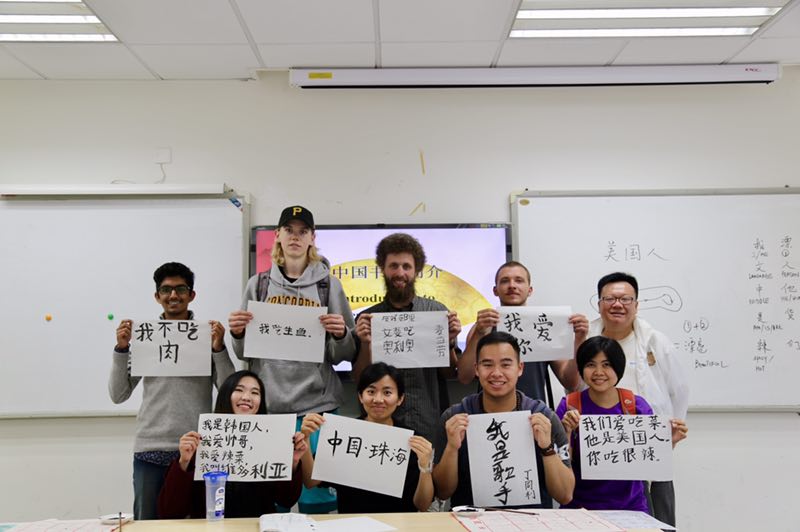Words are the most useful tool for our society. At a basic level, they have intrinsic meaning, but they can also be given meaning during the process of their creation. The manner in which one writes or speaks can change the meaning of the words that are put out into the world. This is the foundation for much of academic study, meaning and theory; what exactly is meant by a text composed of words. Ideas and theories are dependent on these sometimes tiny, and/or sometimes HUGE words.

The companion of words are images. They go hand in hand. Imagery is often a way of delivering a message in an aesthetic way, whilst texts are a visual art form of the mind. This balance is most clearly seen in the art of calligraphy.

Although I have never studied it until now, I have always had a detached sense of respect and admiration for calligraphy. It seemed to be a perfect blend of nuanced poetry and the beauty of artwork. So when I heard that the UIC International student Club (ICS) will be given the chance to try out Chinese calligraphy, I thought that it was an opportunity that couldn’t be missed.

On the 22nd of March Dr. Hockming Lee lead a workshop that aimed to teach the basic principles and background of calligraphy to the ISC and give us a taste of what practising calligraphy is really like. We first learned about different Chinese characters and how some originated and developed from pictographic symbols for the objects they symbolised, for example, ‘日’ (Sun),’月’ (Moon),’山’ (Mountain). Along with the explanation of the other types of Chinese character, our grounding in how to construct these characters on paper was being built.

The next step was to learn about what calligraphy’s significance as an art-form is. Dr Lee described the history and historical stages of calligraphy and this gave us a greater understanding of the origins of writing in China. This began with the outlining of a writing system on tortoise shells, to later when calligraphy became more standardised and finally reached its current state where it intersects modern Chinese.

After some instruction and guidance from Dr Lee, we got to the most fun part, making a mess with ink! We practised two basic strokes; a vertical stroke, and a horizontal stroke, followed by whatever else we wanted to write! As imaginative as I am, and because I am vegetarian, I decided to write ‘我不吃肉.’ And I think that for a first attempt, it looked alright. Not amazing, but still alright!

Ultimately, it was a fun and interesting afternoon. I learnt about Chinese culture and calligraphy, I managed to try calligraphy for the first time and whilst my calligraphy may not be conventionally beautiful, it definitely had a message. That is the essence of calligraphy. It is communication at its most artistic and creative.
